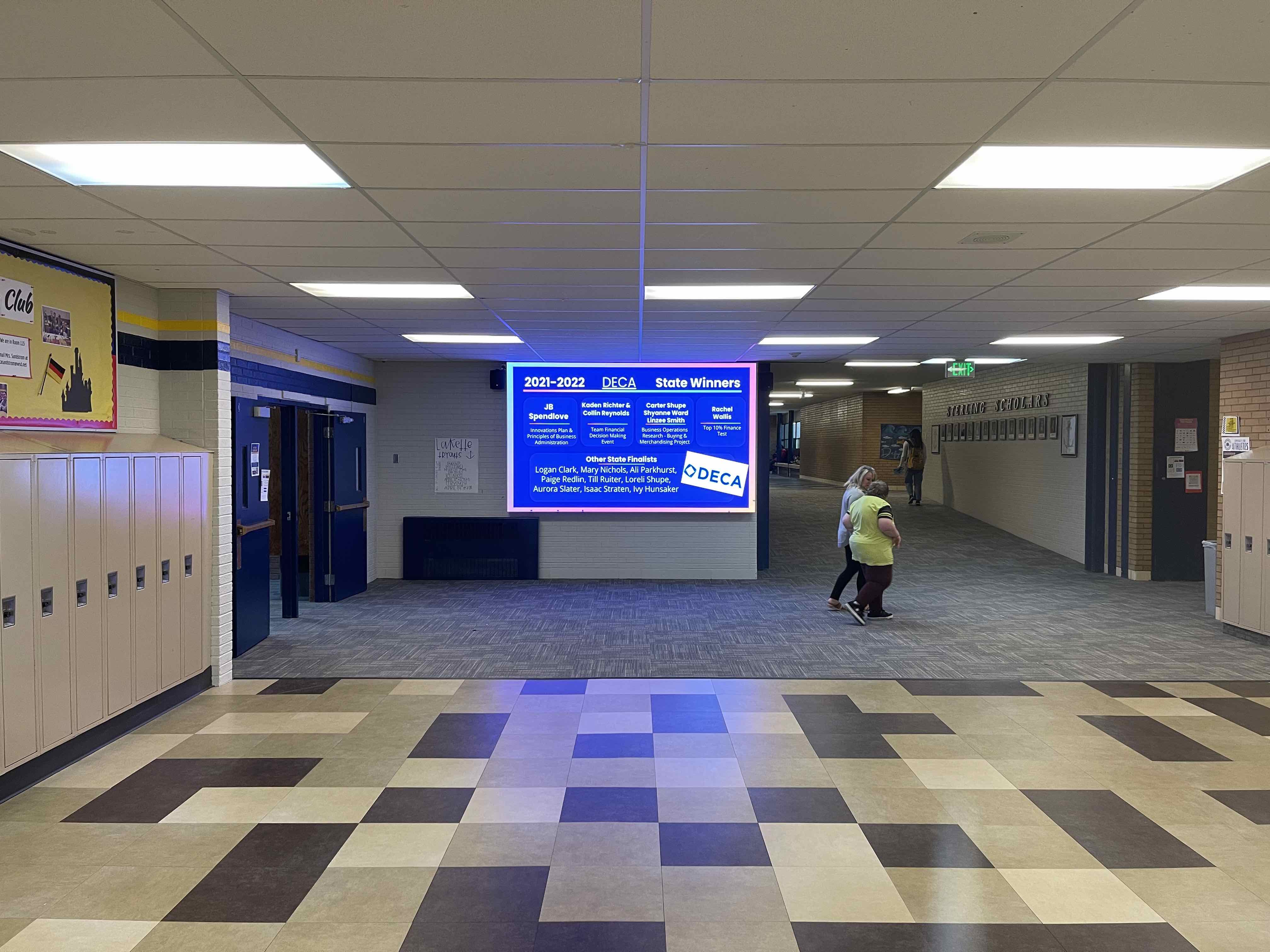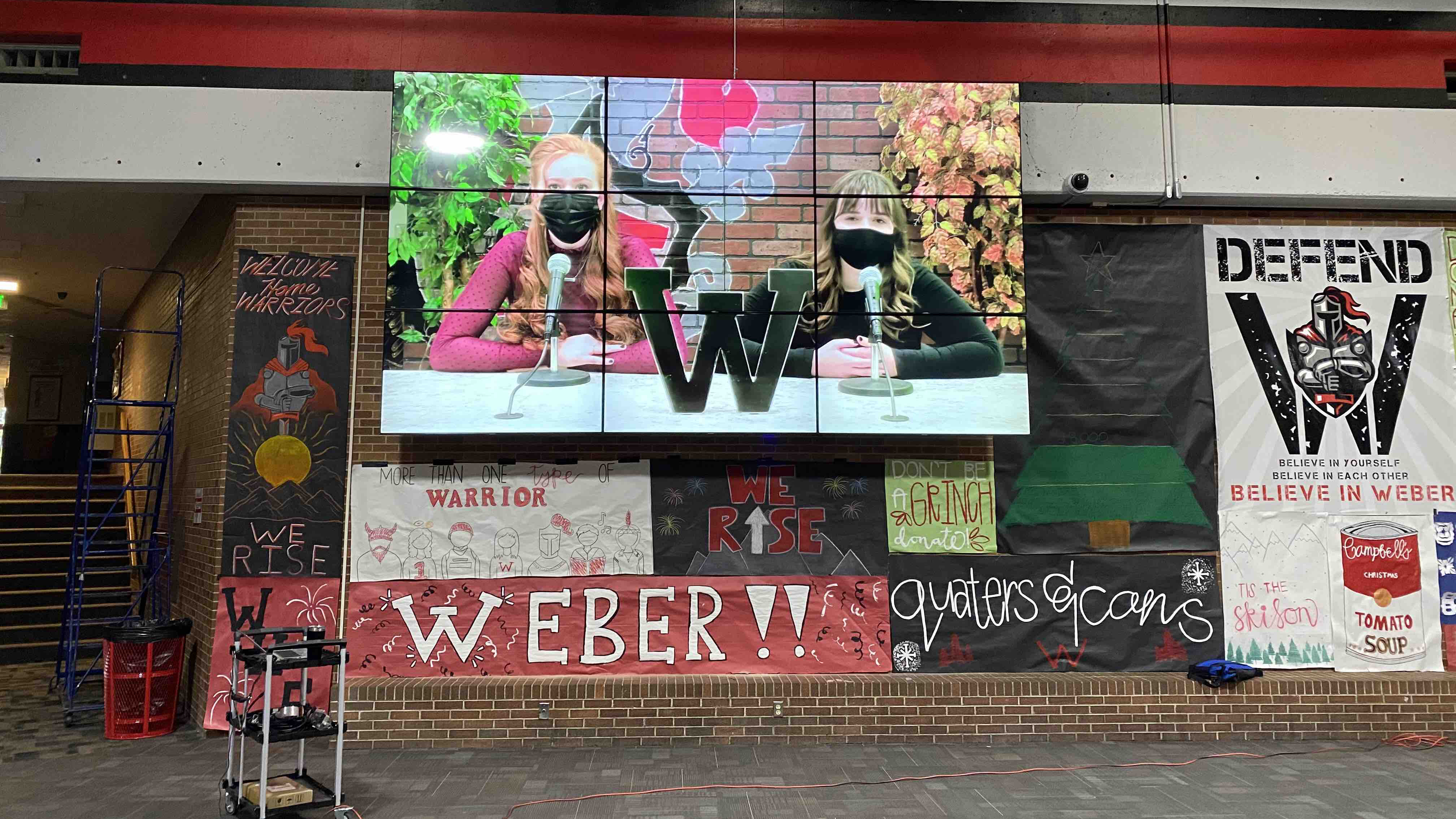The Weber School District in Ogden, Utah, is the latest K-12 school district to deploy Carousel Cloud software to simplify and augment in-school communications to staff, students, and visitors. The school district now disseminates dynamic and timely Carousel digital signage content to 160 displays live in 47 schools, with additional displays to be added as budgets allow.
The Weber school district has 5,000 employees and serves 34,000 students across seven high schools, 10 junior high schools, and 30 elementary schools, making it one of the largest school districts in the state. Dave Hernandez, who leads the district’s technical services team for AV and IT, explained that the Weber School District has long had a desire for visual communications but had limited infrastructure to launch a successful strategy.
“Our initial attempt involved connecting Chromebooks to TVs in the classroom,” he described. “The system technically worked but it wasn’t scalable, and there was no way to manage it remotely. That sparked the search for a cloud solution that supported remote management and monitoring and fell within our budget.”
[Carousel Digital Signage Transitions UConn to Cloud-Based, Campus-Wide Communications]
Hernandez discovered Carousel Digital Signage at a trade show, and quickly identified Carousel Cloud as the right solution to meet these needs. He initially procured just under 100 licenses, and the district now has close to 200 as demand for digital signage grows through the district. While the system’s scale is that of a small enterprise, Hernandez notes that its cost is far from enterprise level.

“We pay very close attention to budgets, and like most school districts, our finances are limited,” he said. “Carousel Cloud provides some very sophisticated front-end and back-end functionality, and it scales easily—all at a reasonable price point.”
While the number of screens per school vary, Carousel content is generally deployed in areas with high foot traffic or attentive audiences. For example, the Carousel Cloud network has a presence in 15 of the district’s media centers, which are located in school libraries. Students watching these displays absorb detailed information on reading suggestions, and trailers of books that students are studying. Cafeteria signage runs daily lunch menus, and the screens in school stores—exclusive to Weber high schools—advertise items for sale.
Screens positioned in hallways, common areas, and lobbies display information on everything from school events to sports news to birthday announcements. These screens also provide information to visiting parents, such as when grades are due for the semester. Hernandez notes that each school has freedom to customize their content, noting that one school recently incorporated QR codes that prompted students to guess which staff member was celebrating a birthday.
[Digital Signage: The Future Is Bright]
That creative freedom also means that each school is responsible for creating and scheduling its own content, though users enjoy a quick learning curve thanks to Carousel’s built-in design templates. Hernandez says that after a brief training session, users are well-equipped to jump in and create thanks to the system’s intuitive user interface.
“It’s fun to see how excited the students and teachers are about creating content, and the more they grow accustomed to the system, the more creative they get,” Hernandez says. He adds that the school superintendent will soon be able to use the system to disseminate district-level communications to all schools.
The ability to use Apple TV devices as media players for Carousel content was another benefit, according to Hernandez’ colleague Vincent Coates. Carousel Digital Signage partner Jamf, a mobile device management firm focused on bringing the Apple Experience to corporate and education entries, worked closely with Hernandez and Coates to securely deploy the Carousel Cloud network to all end points.
In addition to deployments, Weber’s technical services team oversees monitoring and maintaining the network. Hernandez said that Carousel Cloud significantly streamlines these tasks. “Without a centralized hub for monitoring and management, verifying the status of individual devices would be next to impossible because we have so many locations,” he said. “In the cloud, we can do remote check-ins on a daily basis from the comfort of our office.”
He added that network administration—such as assigning clearance—is also made easier, such as when a school wants to invite students to create content. “If a principal calls to request access to a limited number of displays for a student user, we can do that with a couple of clicks.”
In the K-12 environment, it’s necessary for schools to communicate effectively with both students and parents, and Hernandez believes that digital signage can play an important role in achieving this. “Depending on the announcement, you can either inspire enthusiasm among students about a school event, or provide important information like when papers are due, which parents can see when they come to visit,” he said. “And by allowing our own students to create content, it gets them even more excited about school because they’re learning some cool skills. Digital signage has taken off like crazy here, and our schools love it.”
